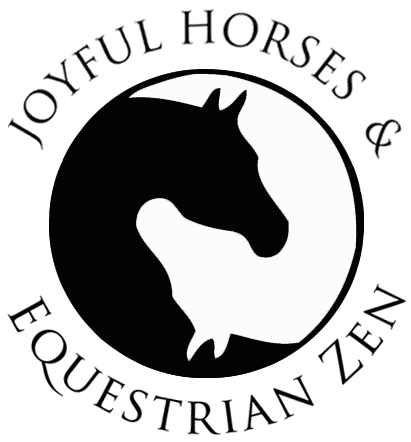One way to help your equine become less anxious about their time working with humans is to be very predictable with lots of good things happening, so that they don’t worry about getting in trouble or about the humans asking for something uncomfortable/scary.

Many new clicker trainers get so excited about all that they can get their horses to do without force, that they don’t take the time to get their cues clear and reliable. They move too quickly to a new behavior and the equines get very good at guessing according to what the human is doing. But when the human stops moving for long, the equine starts guessing more (the beginnings of an extinction burst).
In order to create more predictability, utilize a routine for your training sessions.
- Getting horse out of their pen and haltering: Practice name recall, self haltering, moving forward and halt as you get them through a gate and close it.
- Leading horse to grooming/tack up area: Set up a couple prompts like a mat or target to practice leading, stationing, forward to target.
- Grooming and tacking up horse at liberty: let the horse eat timothy mush with occasional treats for standing with head forward while you work. If they can’t stand still long, take them for a short walk practicing touch and then come back and continue grooming. Repeat as needed.
- Practice voluntary hoof handling near the tack up area. Keep training sessions to under 5 minutes for new or difficult behaviors.
- Set up a pattern of cones and other behavior prompts that you can practice a part of every day you work with your equine.
- Add in a more stressful behavior (like shots or trailer loading) in the middle of your training day so that your equine has had time to relax in to their work, and then they still have time to relax with easy behaviors (like touching targets or rolling balls) afterwards.
- Walking back to their pen is part of the training session. Use a high RoR and add in behaviors they seem to like on the way back to their pen.
- Practicing going up to gates, stopping, going through and halter removal are all behaviors that you can put on cue with practice.
- Leave your horse in an area they can eat a jackpot of good food without any other animals bothering them. Then turn them out with their friends.

There’s a big difference between pinned back ears and ears that are pointed back but not tight against the head. Pinned ears indicate that a horse wants distance between itself and whatever is close.
Backward ears can indicate confusion, a little frustration, or uncertainty.
All are types of stress where cortisol and dopamine are preparing the horse for movement. As trainers, it’s our job to reassure the horse that they are safe, nothing bad is going to happen and simplify the situation so the horse can stay under the Fear threshold and keep thinking rather than reacting.
Of course ears pinned means the human needs to retreat and consider what has upset the horse to the point they think they need to defend themselves.

